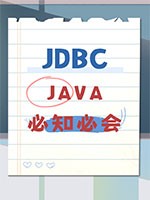public static void reverse(List<?> list) {}
public static void shuffle(List<?> list) {}
- 根据元素的自然顺序对 List 集合中的元素进行排序:
public static <T extends Comparable<? super T>> void sort(List<T> list) {}
- 根据指定的 Comparator 对 List 集合元素进行排序:
public static <T> void sort(List<T> list, Comparator<? super T> c) {}
public static <T extends Object & Comparable<? super T>> T max(Collection<? extends T> coll) {}
- 根据指定的 Comparator,返回给定集合中的最大元素:
public static <T> T max(Collection<? extends T> coll, Comparator<? super T> comp) {}
public static <T extends Object & Comparable<? super T>> T min(Collection<? extends T> coll) {}
- 根据指定的 Comparator,返回给定集合中的最小元素:
public static <T> T min(Collection<? extends T> coll, Comparator<? super T> comp) {}
public static int frequency(Collection<?> c, Object o) {}
public static <T> void copy(List<? super T> dest, List<? extends T> src) {}
public static <T> boolean replaceAll(List<T> list, T oldVal, T newVal) {}
package com.github.collections.demo1;import java.util.ArrayList;import java.util.Collections;import java.util.List;/** * @author maxiaoke.com * @version 1.0 */public class Test { public static void main(String[] args) { List<String> list = new ArrayList<>(); list.add("aa"); list.add("dd"); list.add("hh"); list.add("bb"); System.out.println("list = " + list); // list = [aa, dd, hh, bb] Collections.reverse(list); System.out.println("list = " + list); // list = [bb, hh, dd, aa] String max = Collections.max(list); System.out.println("max = " + max); // max = hh int gg = Collections.binarySearch(list, "gg"); System.out.println("gg = " + gg); // gg = -2 }}





